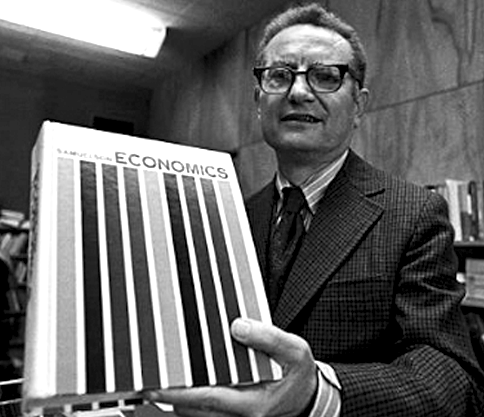Paul Anthony Samuelson, who came to be recognised by the Swedish academies as the man who “has done more than any other contemporary economist to raise the level of scientific analysis in economic theory“, was born in Gary, Indiana, on 15 May 1915. Paul won the Nobel Prize in economics in 1970 for “the work by which he developed static and dynamic theory and contributed to raising the level of analysis in economic science”. On 13 December 2009 in Belmont, Massachusetts, he died at the age of 95, the first American to win the Nobel Prize in Economics.
The University of Chicago awarded Paul Anthony Samuelson the degree of Bachelor of Arts in 1935, Harvard University awarded him the degrees of Master of Arts (1936) and Doctor of Philosophy (1941), where such prestigious teachers accompanied him as Alvin Hansen, Wassily Leontief (winner of the Nobel Prize in economics in 1973) and Joseph Schumpeter.
Harvard University awarded a young Paul Anthony Samuelson the David A. Wells Prize, and the American Economic Association awarded him the John Bates Clark Medal, calling him the living economist under the age of 40 “who has made the most distinguished contribution to the main body of economic thought and knowledge”.
Right after graduating, at the age of 26, he became an assistant professor at the Massachusetts Institute of Technology (MIT), and by the age of 32, he was a full professor. It was not until 1966, at the age of 51, that he was awarded MIT‘s highest faculty honour, being named Institute Professor. Samuelson was instrumental in turning his Economics Department into a world-renowned institution by attracting Robert M. Solow, Joseph E. Stiglitz, Paul Krugman, Robert C. Merton and Franco Modigliani, all Nobel Prize winners.

The work of Paul Anthony Samuelson
It is important to be aware that Paul Anthony Samuelson‘s perspective was formed in conditions where the United States was going through one of its worst crises (economically speaking).
Samuelson is known as the founder of modern mathematical economics. One of his main approaches was developed in the Chicago school, where he demonstrated that companies and consumers act rationally to make the most of any situation. This approach was reflected in his most influential work, “Fundamentals of Economic Analysis”, in 1974. He described economics as a branch of applied mathematics and became fundamental to the theory of general equilibrium.
But it is very likely that for many university students, Paul Anthony Samuelson is simply the author of the best-selling economics textbook of all time, “Economics”. However, it was originally named “Economics: An Introductory Analysis”, which has been translated into 40 languages since its publication in 1948 and has sold more than 4 million copies.
Not all was rosy in Samuelson’s professional life, as his assertions that “in times of unemployment, the government should be responsible for acting and that American capitalism could function properly only if the government played a referee role” and that “the government needed to stabilise a capitalist economy and that this stabilisation might sometimes require modest government deficits” were considered communist, which earned him strong criticism before the publication of his book.
He served as an advisor to Presidents John F. Kennedy and Lyndon B. Johnson. He became a consultant to the US Treasury, the Council of Economic Advisors and the President’s Budget Office. At Newsweek, he represented the Keynesian perspective, while his colleague Friedman represented the monetarist perspective.
Paul Anthony Samuelson‘s role in post-war economics was honoured by the Royal Academy, making him the second winner of the Nobel Prize in Economics and the first American.





